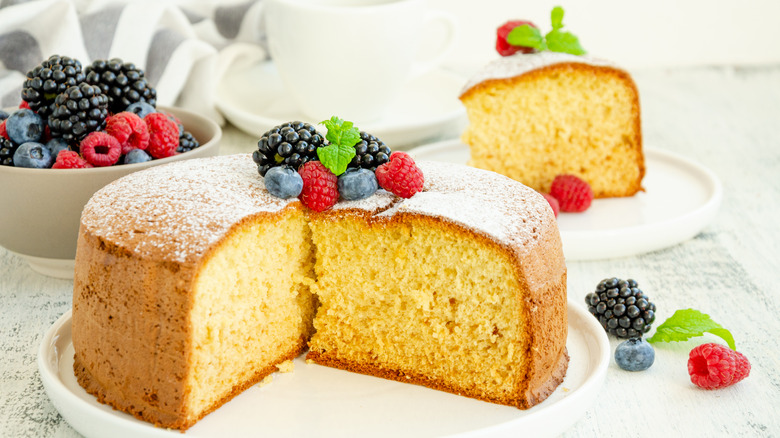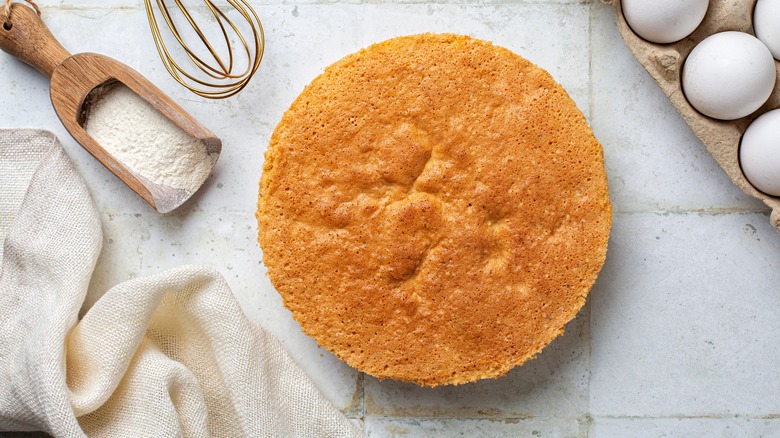Why You Shouldn't Grease Your Sponge Cake Pan
Sponge cakes are meant to be light and airy, at least if you make them correctly. As any "Nailed It!" or "Worst Cooks in America" fans know, though, there are so many ways you can screw up a cake. One of the most dangerous steps in the process — dangerous to the cake, that is, not the cook — is the point where the cake is removed from the pan. To ensure a successful unmolding, many bakers rely on a liberal pre-baking application of grease and flour or a spray-on combo such as Baker's Joy. Whoopsie. Turns out that's not such a great idea if you're baking a sponge cake.
Sponge cakes, along with angel food, chiffon, or other cakes with egg white-based batters, rise as they bake, as do most cakes. The fact that they are doing so with such a delicate leavening as whipped air and albumen, though, means that they need a little extra help, and here's where the cake pan comes into play. The batter uses the pan's sides for support, as it is essentially rising along them. If the sides are slick and greasy, though, it will slip and sink back down again. As a result, the finished cake will be flat, not fluffy.
How you can help your sponge cake come out in 1 piece
So if you don't grease the cake pan before you pour in the sponge cake batter, how will you know the cake is going to come out intact? It's a leap of faith to assume that egg whites alone will make for a non-sticky cake, but there are a few extra steps you can take that will help you make sure your cake exits the pan in one piece. One thing you may wish to do is to line the cake pan with a piece of dry wax paper. Sure, you could also use parchment paper, but this is one of those times when it's okay to go with the cheaper option since dry wax paper that's completely covered with batter won't burn.
Once your sponge cake comes out of the oven, flipping it over and letting it cool in the upside-down pan allows the steam to escape so it can set while at the same time preventing it from collapsing under its own weight as it might if left to cool with the top facing up. When you want to remove the cake from the pan, run a knife around the inside edge to loosen it. If necessary, you can also shake the pan. If neither technique convinces the cake to give up its grip, it may need to be cooled for a while longer. As a last resort, though, broken sponge cake makes great trifle.

